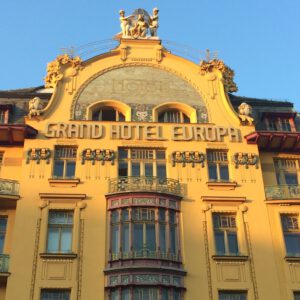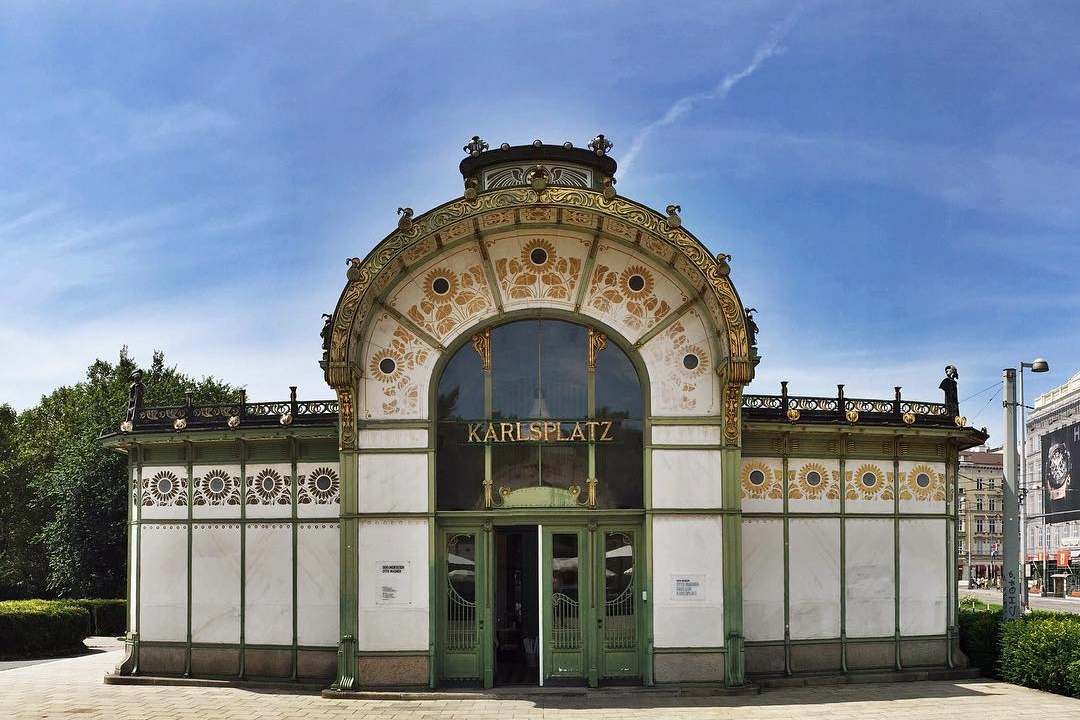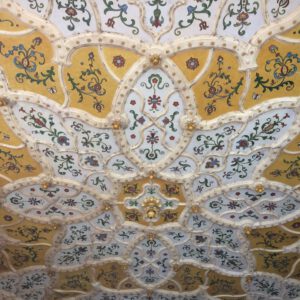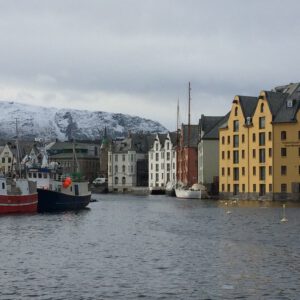How many Art Nouveau destinations exist in Europe? +1,000!
If you’re a fan of Art Nouveau, or simply a lover of architecture or art history, you may wonder how many cities or villages have buildings in this art style.
There are some articles about the “Top 5 or Top 10 Art Nouveau destinations in the world” and they always include places like Prague, Paris, Riga, Barcelona, Budapest, Brussels or Turin. With the objective of becoming more unique, these articles sometimes include cities like Bratislava, Terrassa, London or Subotica and Palic.
These articles could make you think that there are 25 or 30 Art Nouveau destinations in Europe, but this figure would undervalue the impact of Art Nouveau at the turn of the 19th and 20th Centuries.
After analysing some data we consider that the number of Art Nouveau locations in Europe easily surpasses the 1,000 figure. As an example, at the bottom of this email we include a list of a hundred Italian cities or villages with buildings in Liberty Style, Italy’s Art Nouveau (and a link with pictures from all of them). The Austrio-Hungarian Empire had hundreds of cities and villages with Art Nouveau buildings, and the same can be said of France.
English uses the French name Art Nouveau (new art). The style is related to, but not identical with, styles that emerged in many countries in Europe at about the same time: in Austria it is known as Secessionsstil after Wiener Secession; in Spanish Modernismo; in Catalan Modernisme; in Czech Secese; in Danish Skønvirke or Jugendstil; in German Jugendstil, Art Nouveau or Reformstil; in Hungarian Szecesszió (Secession); in Italian Art Nouveau, Stile Liberty or Stile floreale; in Norwegian Jugendstil; in Polish Secesja; in Slovak Secesia; in Russian Модерн (Modern); and in Swedish Jugend.
In each country Art Nouveau (1890-1914) had its own identity, and sometimes artists at that time were opposed to each other. However, beyond these “oppositions” between countries or even artists, we can find, retrospectively, numerous common points in each movement.
From www.artnouveau.club we offer private Art Nouveau tours in a dozen of European Art Nouveau cities and we are working to add new are the best destinations for seeing this art form reflected in the local cityscape. If you are looking for a specialised Art Nouveau tour check our site www.artnouveau.club by clicking HERE.
In every Art Nouveau European destination we partner with the best local guides (always licensed) and with the best local experts (academic advisors) to provide you with exclusive tours with unique offerings.
This is the list of the 100 Italian cities or villages with buildings in Liberty Style, Italy’s Art Nouveau (YOU CAN SEE PICTURES OF ALL OF THEM BY CLICKING HERE):
Agrigento
Anzio (Roma)
Arona (NO)
Avellino
Bari
Bellaria (RN)
Bertinoro (FC)
Bologna
Bolzano
Buonconvento (SI)
Busto Arsizio (VA)
Calolziocorte (LC)
Caltagirone
Canicattì (AG)
Carpi (MO)
Are you the owner of this company? Casalmaggiore (CR)
Castelferretti (AN)
Catania
Cecina (LI)
Cesena (FC)
Cesenatico (RA)
Civitanova Marche (MC)
Colmegna (VA)
Correggio (RE )
Corridonia (MC)
Faenza (RA)
Falconara (AN)
Fano (PU)
Ferrara
Florence
Fiuggi (FR)
Follonica (GR)
Forlì
Gallarate (VA)
Genoa
Grosseto
Grottamare (AP)
Imperia
Induno Olona (VA)
Lecco
Levico (TN)
Licata (AG)
Livorno
Lodi
Lucca
Luino (VA)
Merano
Messina
Milan –> We already organize Art Nouveau private tours in this city. CLICK HERE for more information
Modena
Monterosso (SP)
Mondello (PA)
Monterosso (SP)
Naples
Novafeltria (RN)
Oristano
Padua
Palermo
Parma
Pavia
Pens (PE)
Pesaro
Pescara
Piacenza
Pistoia
Ramaiola (PR)
Reggio Calabria
Reggio Emilia
Riccione (RN)
Rimini
Rome
Rovereto (TN)
Rovigo
Salsomaggiore Terme (PR)
San Felice Sul Panaro (MO)
S. Pellegrino Terme (BG)
Santarcangelo di Romagna (RN)
Santa Marinella (ROMA)
Sarnico (BG)
Sassari
Savona
Sciacca (AG)
Senigallia (AN)
Sesto Calende (VA)
Siena
Stresa (NO)
Sulmona (AQ)
Turin –> We already organize Art Nouveau private tours in this city. CLICK HERE for more information
Treviglio (BG)
Trieste
Udine
Valganna (VA)
Varese
Venice
Verona
Viareggio (LU)
Vigevano (PV)
Viserba (RN)
There are more than a thousand Art Nouveau buildings in Italy because this style of architecture was embraced by many Italian cities during the late 19th and early 20th centuries. Italy was undergoing a period of great cultural and artistic ferment at this time, with a renewed interest in classical art and a rejection of the more ornate and heavy styles that had dominated the previous centuries. Art Nouveau offered a fresh approach to architecture that was both modern and expressive, characterized by flowing lines, organic forms, and decorative flourishes inspired by nature.
In Italy, Art Nouveau was particularly popular in urban areas such as Milan, Turin, and Rome, where it was used to create elegant and sophisticated buildings that reflected the country’s growing economic and cultural prominence. Many of these buildings were designed by renowned architects such as Giuseppe Sommaruga, Carlo Maciachini, and Giulio Ulisse Arata, and they still stand as testaments to the creative and innovative spirit of the era.
Today, Art Nouveau buildings in Italy are treasured for their unique beauty and historical significance, attracting visitors from around the world who appreciate the elegance and sophistication of this iconic architectural style.
Art Nouveau, an elegant and intricate artistic movement that flourished in Europe from the late 19th to early 20th centuries, is celebrated for its flowing lines, organic forms, and incorporation of natural motifs. Exploring Art Nouveau in its original context offers a unique and immersive cultural experience, and private tours are an exceptional way to delve into the beauty and history of this artistic style. At artnouveau.club, we pride ourselves on providing the best guides to lead you through the architectural and artistic wonders of Europe’s finest Art Nouveau cities.
Brussels, Belgium
Brussels is often considered the heart of Art Nouveau architecture, thanks to the groundbreaking work of Victor Horta. Our private tours will take you to iconic sites such as the Horta Museum, the former home and studio of the master architect himself. You’ll also visit the stunning Hotel Tassel, with its revolutionary use of iron and glass, and the Maison Cauchie, noted for its remarkable sgraffito decorations. Our expert guides will provide insights into the historical context and personal stories behind these masterpieces.
Vienna, Austria
Vienna’s Art Nouveau, or Secession style, boasts notable contributions from artists like Gustav Klimt and architects like Otto Wagner. Our tours include a visit to the Secession Building, home to Klimt’s iconic Beethoven Frieze, and the Majolikahaus, with its vibrant ceramic facade. You’ll also explore the Karlsplatz Stadtbahn Station, designed by Wagner, and learn about the philosophy of the Secession movement, which sought to break away from traditional artistic conventions.
Barcelona, Spain
Barcelona is synonymous with the fantastical works of Antoni Gaudí, whose Art Nouveau masterpieces define the city’s architectural landscape. Our private tours will guide you through the intricate details of the Sagrada Família, the whimsical Park Güell, and the undulating facade of Casa Batlló. You’ll discover the organic forms and symbolic elements that characterize Gaudí’s work, as well as the broader context of Catalan Modernisme, a regional variant of Art Nouveau.
Prague, Czech Republic
Prague’s Art Nouveau scene is a blend of opulent design and nationalist sentiment, best exemplified in the Municipal House. Our tours cover this magnificent building, with its lavish interiors and Alfons Mucha’s murals. You’ll also visit the Hotel Paris, the Jubilee Synagogue, and various other architectural gems. Our guides will share the stories of the architects and artists who contributed to Prague’s unique Art Nouveau heritage.
Budapest, Hungary
Budapest’s Art Nouveau is vibrant and eclectic, with a distinct Hungarian flavor. Highlights of our tours include the Gresham Palace, now a luxury hotel, with its stunning facade and interiors. You’ll also explore the Museum of Applied Arts, designed by Ödön Lechner, often dubbed the “Hungarian Gaudí” for his inventive and colorful approach. Our knowledgeable guides will elucidate the cultural and historical influences that shaped Budapest’s Art Nouveau movement.
Riga, Latvia
Riga boasts one of the largest and best-preserved collections of Art Nouveau architecture in Europe. Our tours will take you through the Albert Street (Alberta iela) district, where nearly every building is a testament to this artistic style. Key stops include the extravagant facades designed by Mikhail Eisenstein. You’ll gain insight into how Art Nouveau’s principles were interpreted in the context of Riga’s urban development.
Conclusion
At artnouveau.club, our private tours are meticulously curated to provide a comprehensive and engaging exploration of Art Nouveau in Europe’s most enchanting cities. Our expert guides are passionate about sharing their deep knowledge of the movement’s history, architecture, and cultural significance. Whether you are an avid art lover, a history enthusiast, or simply curious about this beautiful era, our tours offer an unparalleled experience that brings the splendor of Art Nouveau to life. Join us to discover the intricate beauty and fascinating stories behind the Art Nouveau masterpieces that adorn Europe.
Art Nouveau if beautiful, isn’t it?
The prevalence of Art Nouveau buildings in Europe can be attributed to several factors, including cultural trends and economic conditions.
Art Nouveau, also known as Jugendstil, was a popular style of art, architecture, and design that emerged in the late 19th century and flourished in the early 20th century. The style was characterized by its use of organic forms, flowing lines, and ornate decorations.
In Europe, Art Nouveau was embraced by many architects and designers who saw it as a way to break free from the constraints of traditional styles. It quickly became a symbol of modernity and progress, and its popularity spread across the continent.
Moreover, Europe has a long history of patronage of the arts, and many wealthy Europeans during the Art Nouveau period were enthusiastic supporters of the style. They commissioned architects and designers to create elaborate buildings, furniture, and decorative objects, which helped to popularize the style and make it more accessible to the wider public.
Additionally, Europe has experienced relatively stable economic conditions over the past century, which has allowed many Art Nouveau buildings to be preserved and maintained. In contrast, countries with less economic stability, such as many Latin American and Russian countries, may have had fewer resources to invest in the upkeep of historic buildings.
In summary, the prevalence of Art Nouveau buildings in Europe can be attributed to a combination of cultural trends, historical patronage of the arts, and favorable economic conditions.






